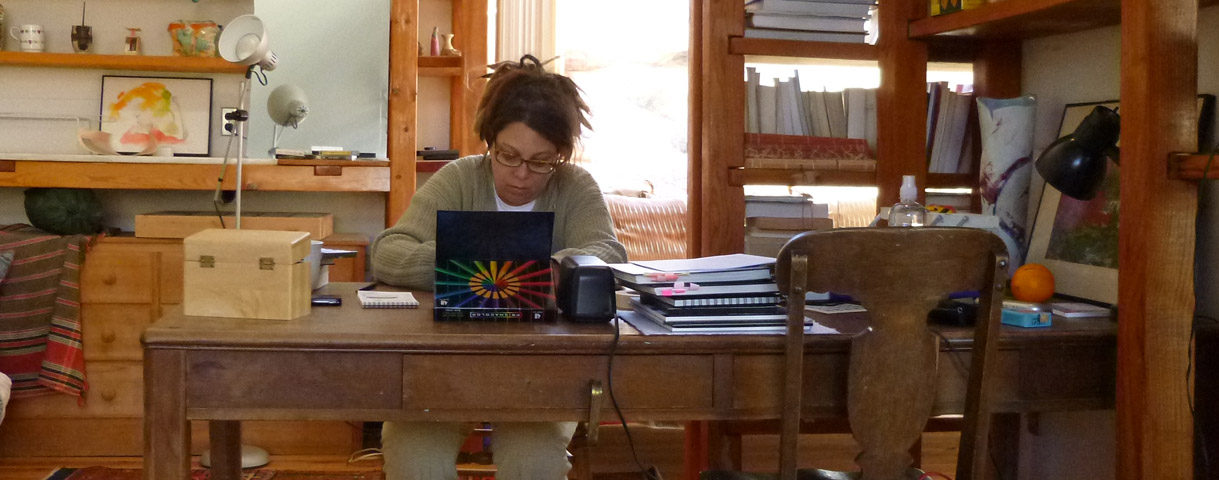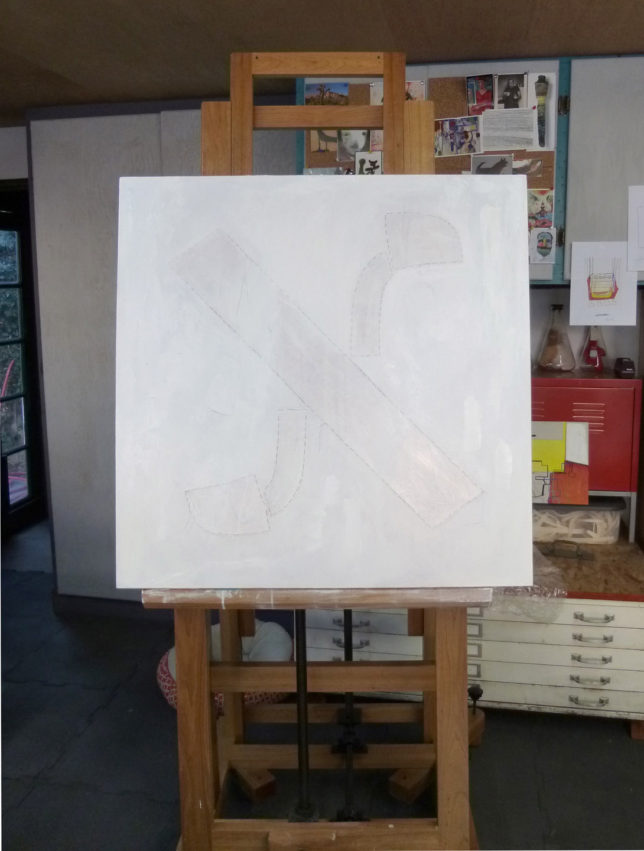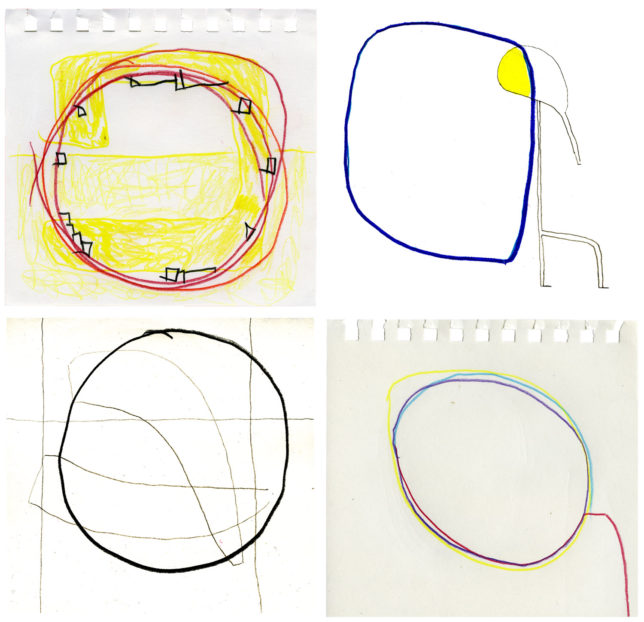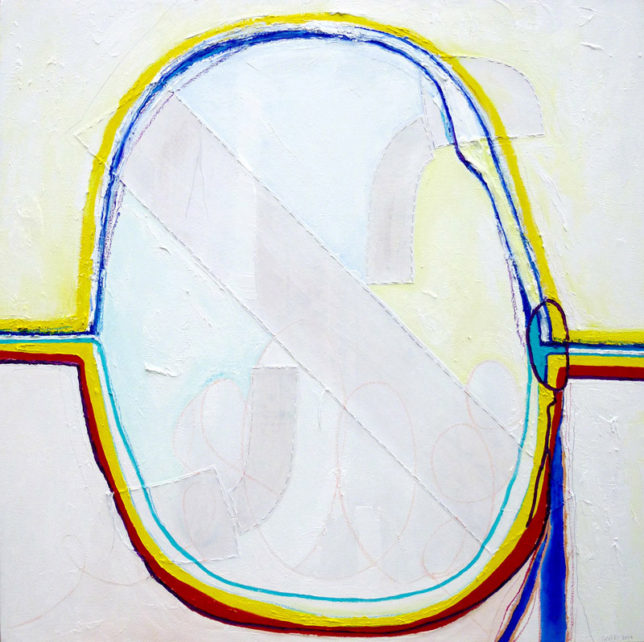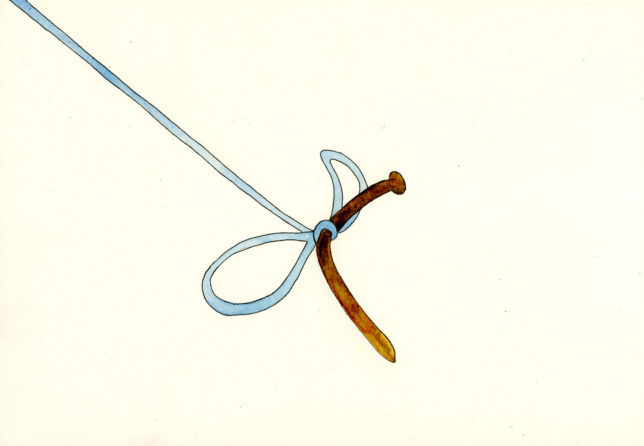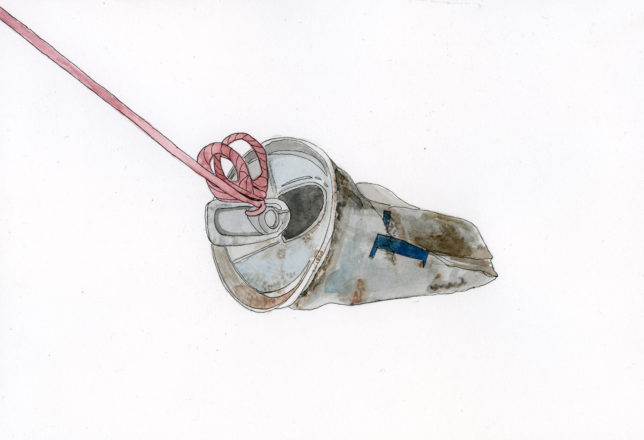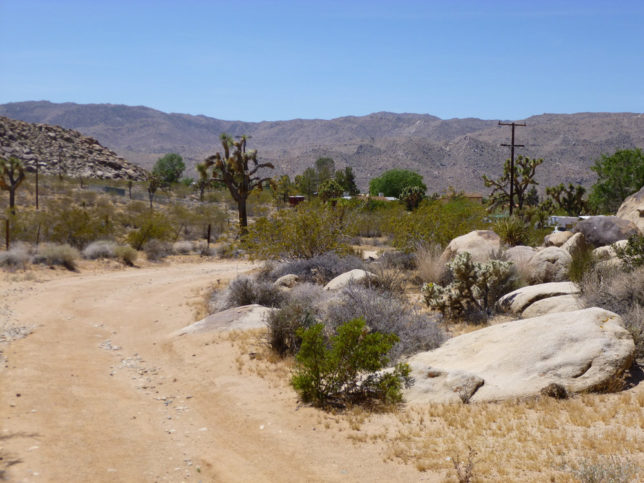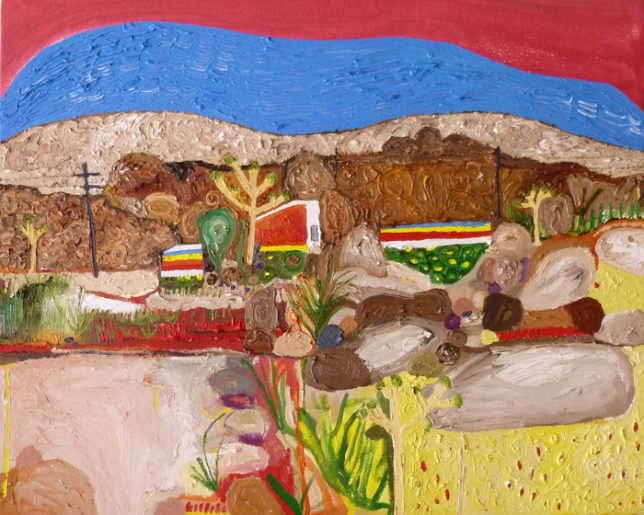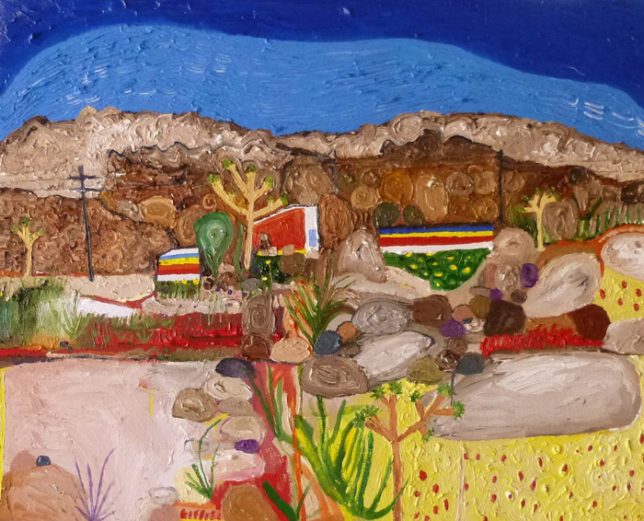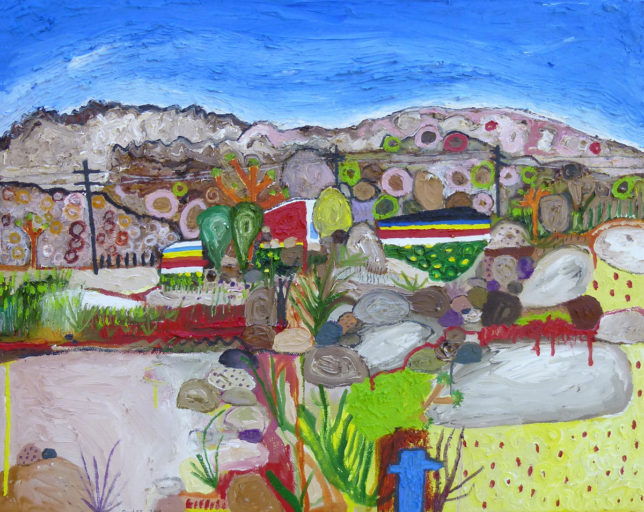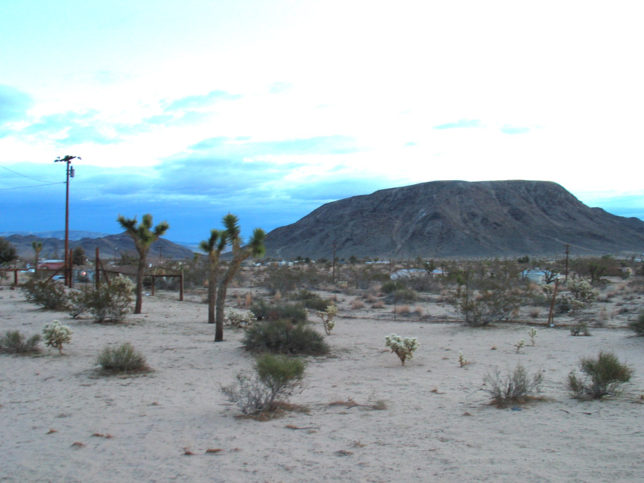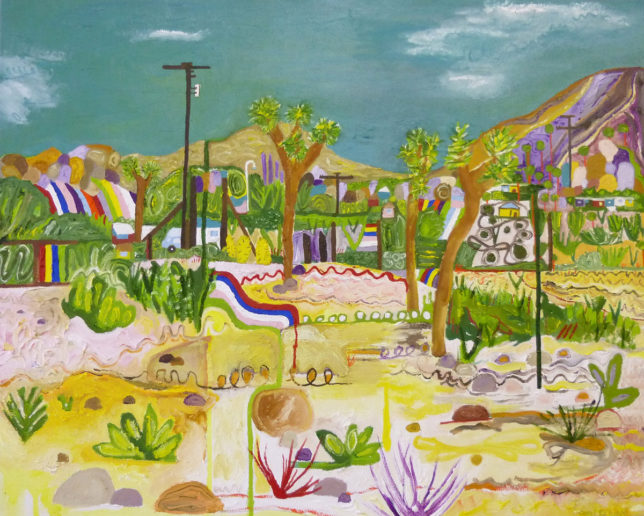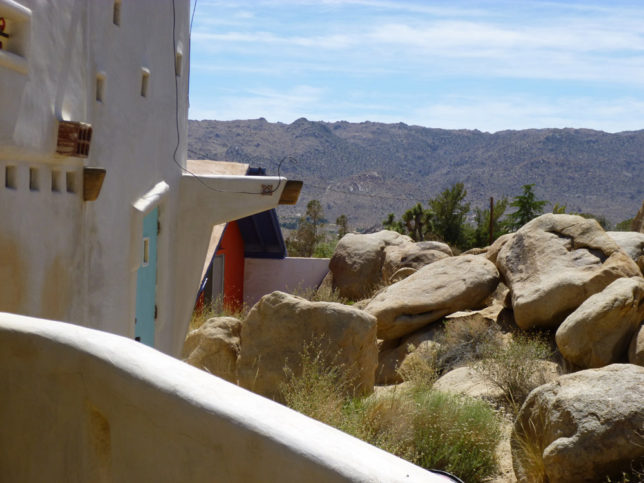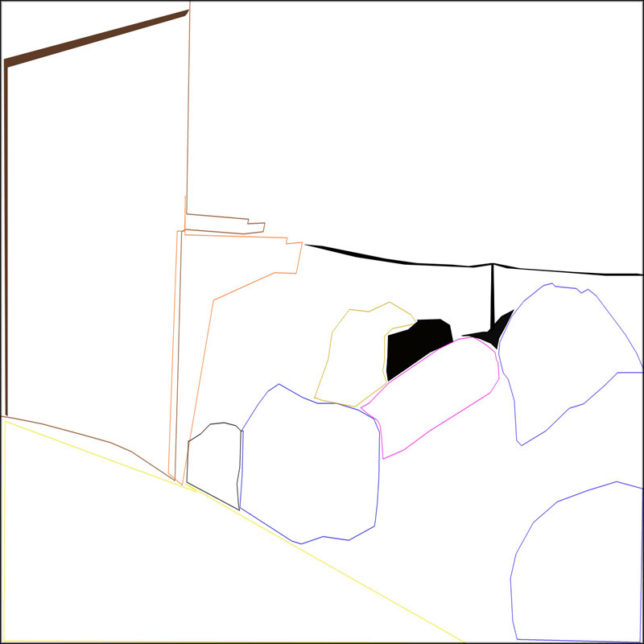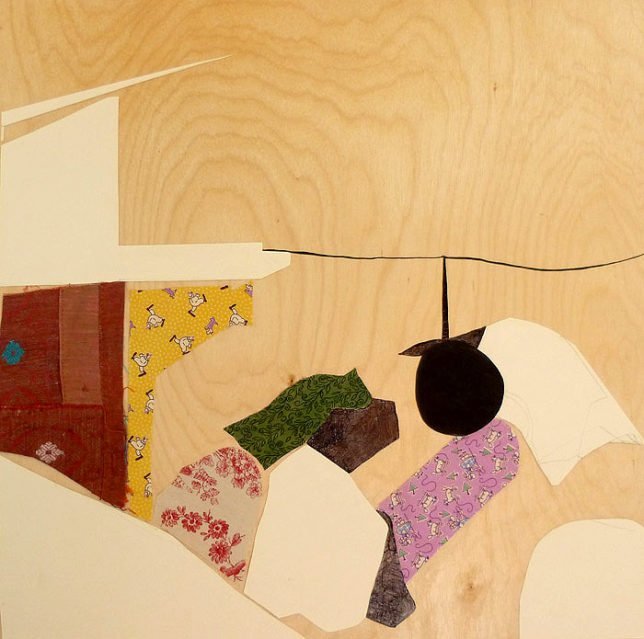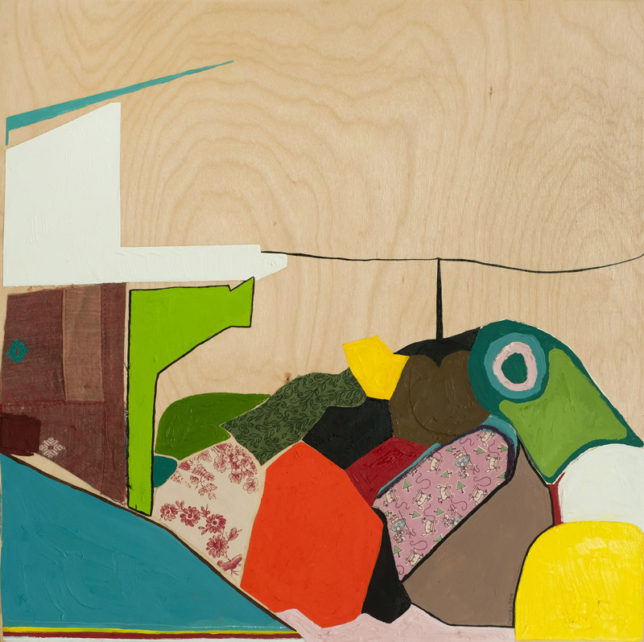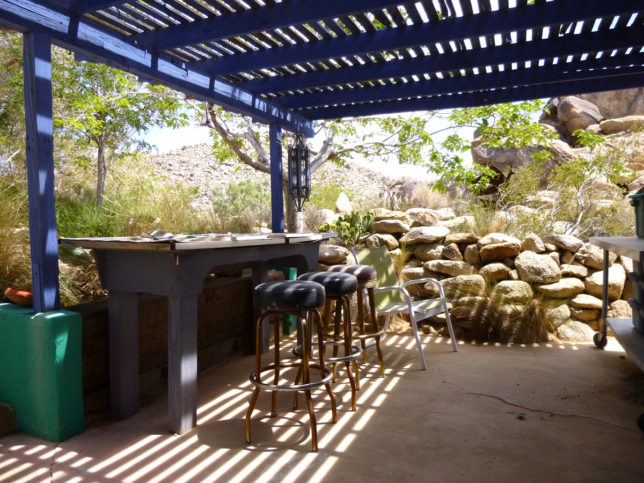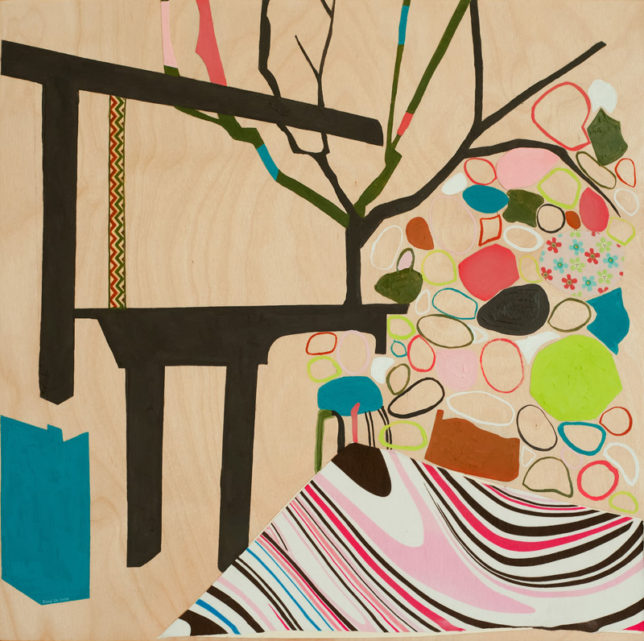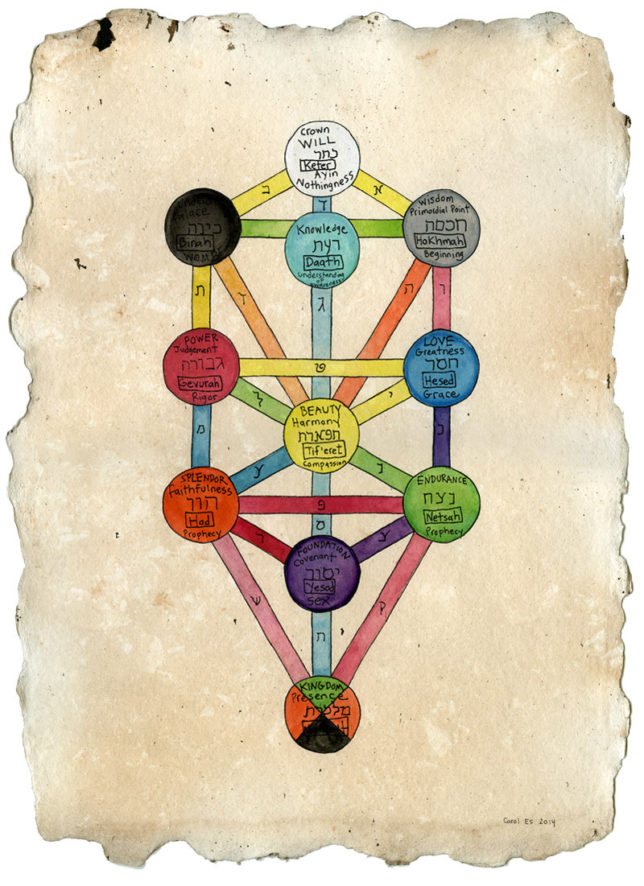The Process – 10 Days in the Desert
When approaching this project in early 2014, all I really knew was that I wanted to produce a series of paintings after an extended stay in Joshua Tree. I was leaning toward making those pieces abstracted – at least to some degree, and address nature as my subject matter. This sort of narrative in itself would be a sizable departure from what I was used to since I was mostly painting about my past childhood pain. Although this is a very therapeutic process, I was starting to feel stale and needed a new muse. The high desert of Joshua Tree became that muse – a personal and creative leap out of what was comfortable for me, and a step into finding a more calming center.
At the time, I was represented by Shulamit Nazarian and my solo show proposal for the following year (and how much space I’d get) was still pending. Nevertheless, I decided to do a Kickstarter campaign to fund my 10-day stay in Joshua Tree while further solidifying the project and added plans for a short film and a video installation.
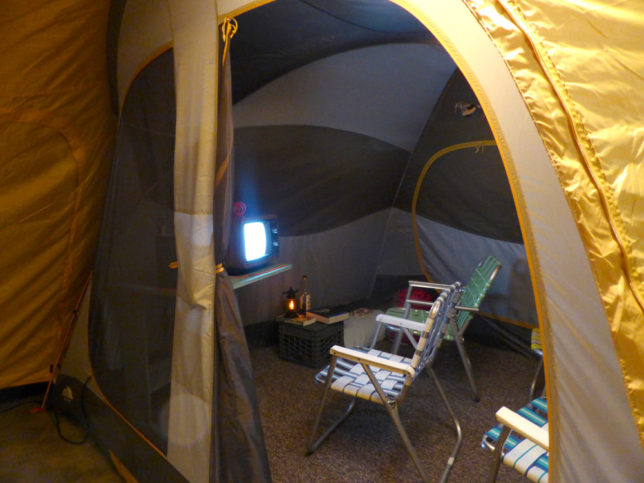
The plan was to rent a secluded house near Joshua Tree National Park in the spring. Each day I would study the Torah and meditate on Kabbalah, gather, create and collect Joshua Tree ephemera while documenting my surroundings. And I’d be sharing the whole entire process with my viewers (all four of them) by writing as much as I could about the project on The Exodus Project’s blog.
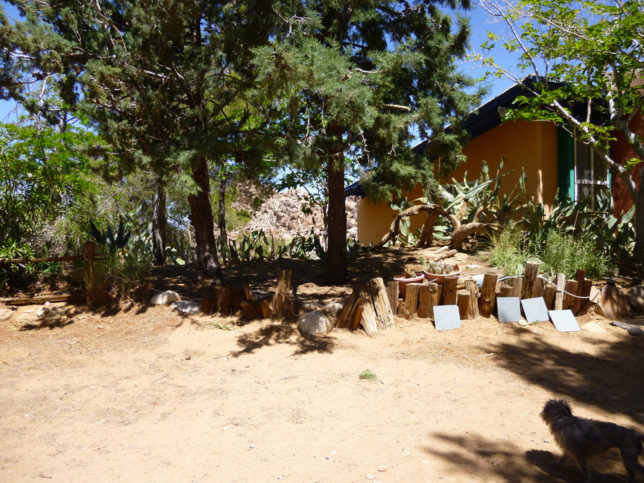
In the beginnings of the blog, I mostly talk about how my daily routine went while I was at the cabin and how I meditated on the Kabbalah. I studied a single letter of the Hebrew alphabet pretty much every day and my reference was: Channels of Creative Consciousness by Rabbi Yitzchak Ginsburgh. I did this, along with creating sketches and watercolors – as well as video diaries – in the detached artist’s studio on the property I was renting.
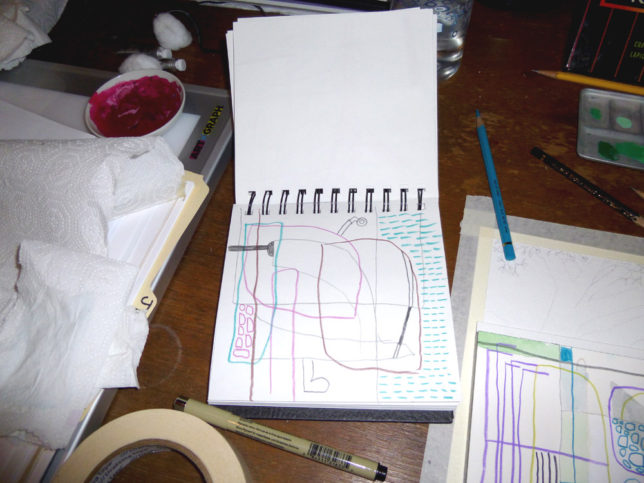
I pretty much committed myself to a ritual when I was there. Each morning, I’d have my coffee while reading about the Hebrew letter of the day, then walk my dog, Gemma. We’d walk down to the studio and meditate on the letter there. There were little futons in there, so it was very cozy. My form of mediation might not be like most people’s, but I get deeper into how that all works on the blog, and my other sketch book practices as well.
After all the meditating business, I’d turn to my “eye-book” to write and draw. I have a little process for that too that I bore everybody with here. Then I would see what would happen in my sketchbook without planning it out beforehand, much in the way I approach my Journal Project.
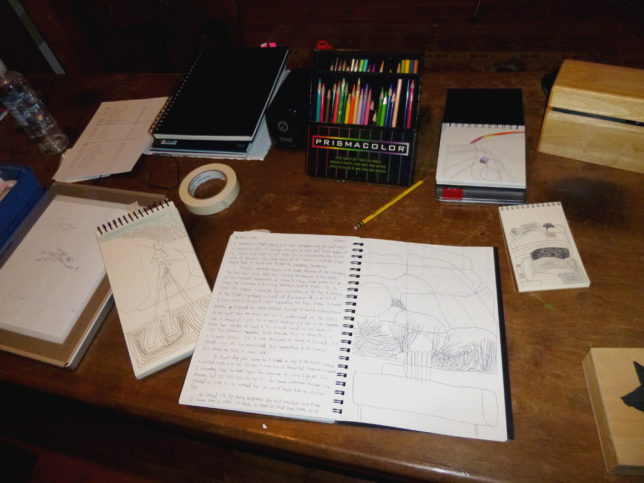
Parts of the day, I broke out my DV cam where I captured outdoor footage, then a few personal studio diaries indoors. I brought an old school Sony TRV900, my Nikon FG, my Holga and my old digital, Cannon Powershot G3, which I have since retired. I also have a Panasonic Lumix DMC-SZ1 that actually takes better pictures than the Cannon, but I like the SLR feel of holding the Cannon in my hands. I wound up not even using it though. I used the Lumix instead.
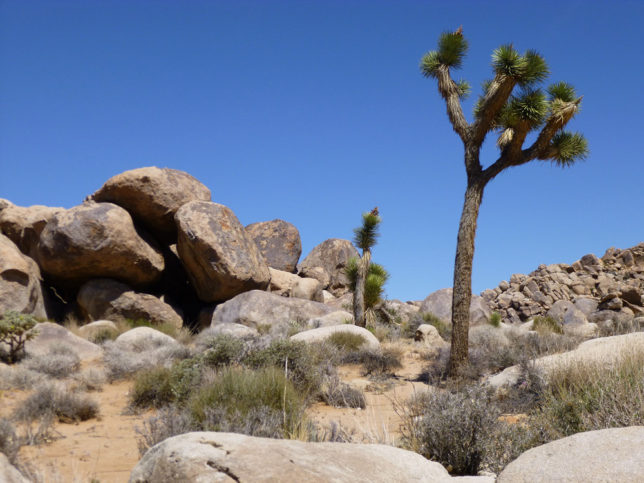
I did lots of exploring while snapping pictures and filming stuff with these nifty instruments. And all this documentation, sketching, field notes, and watercolors would become all the reference material I would need for the next year’s worth of work back at my Los Angeles studio. Once the project went on exhibition, my intention was to display all this ephemera and preliminary documentation that I gathered in the desert into my installation in some way.
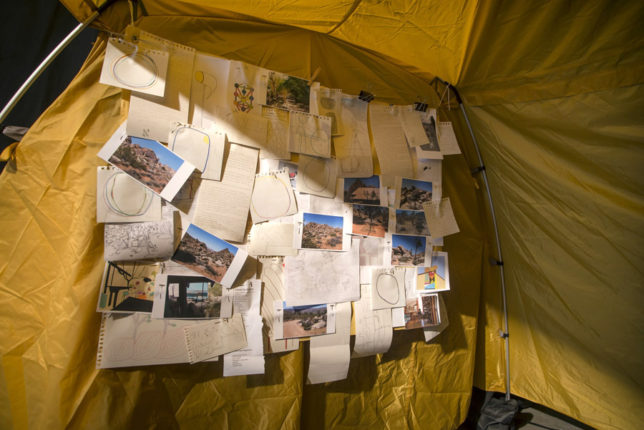 Back Home
Back Home
Back home at my studio in Los Angeles, I got hard at work and began my first experimental paintings by making journal drawings and arranging them into shapes that resembled Hebrew letters. I then glued them to my canvases, as these were the “skeletons” of the backgrounds for what was to come.
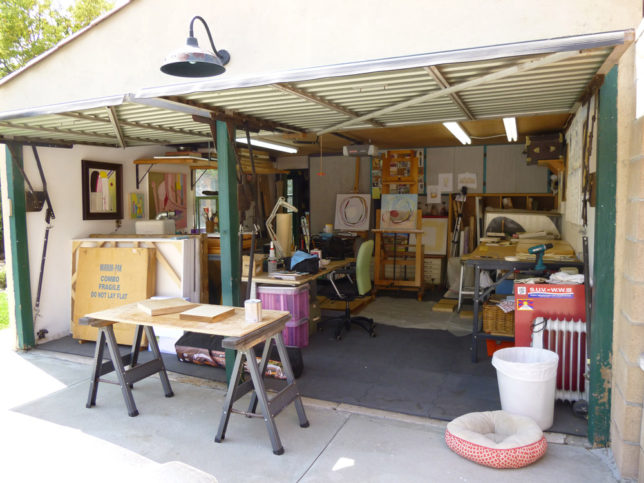
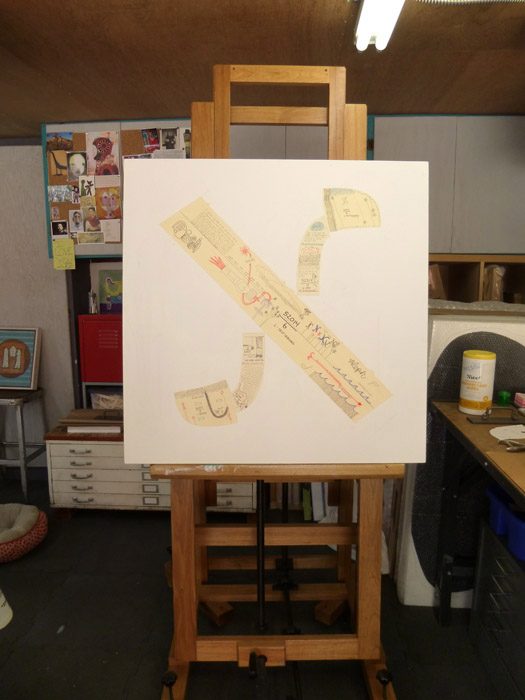 I then covered up these drawings in quite a few layers of transparent paint before finally stitching the edges of the patterns through the canvas.
I then covered up these drawings in quite a few layers of transparent paint before finally stitching the edges of the patterns through the canvas.
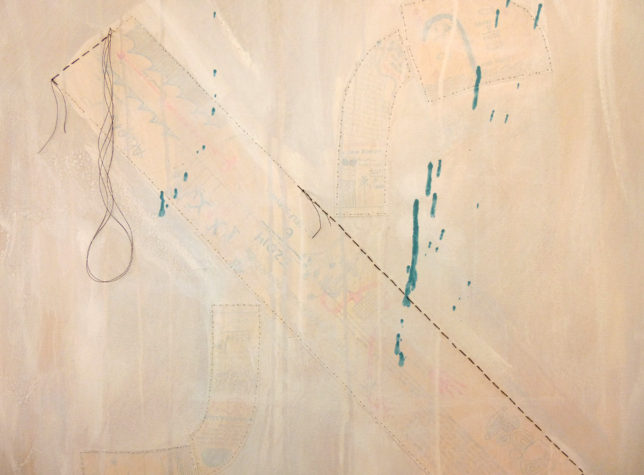
One or two more coats of paint on top of that, and my background was completed.
The foreground of the paintings were entirely dependent upon my Joshua Tree experiences. That was why those 10 days I spent there were so important. But here I was paying particular attention to contour and line – especially those amazing rock formations I came to love. Who knew I’d get so into rocks?
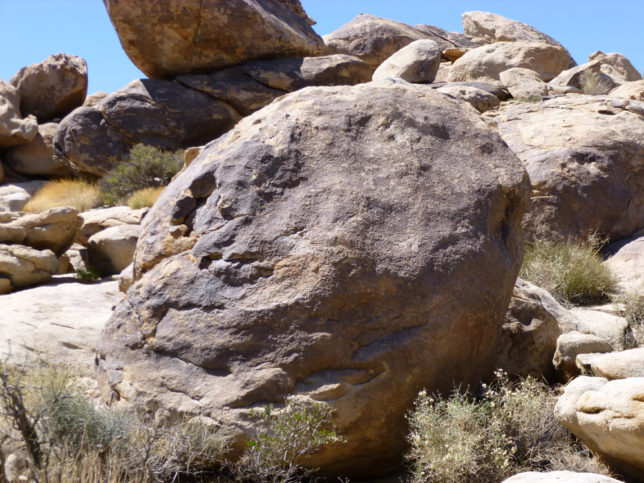
You’d think it would be all about the Joshuas, but I had been drawing tons of six by six-inch sketches of rocks while I was out there on my retreat almost incessantly, and that was the main reference material I had to work with.
But after four months of working on these paintings, I realized I was wasting my time – spinning my wheels and stressing out completely. Truthfully, it was not the avenue I wanted to take in regards to Joshua Tree. Exploring the rocks just got to be so limiting and ridiculous to me. I also wound up putting really heavy significance on these paintings as well — kabbalah significance that no one would ever relate to by looking at the pieces.
I was so spun into my own head with these things! The whole process became entirely spiritual and not at all practical, and this really made me think about why I went out to Joshua Tree in the first place. Didn’t I want to get away from making work all about the “personal?” I did. I had to totally re-think my strategy and go back to the beginning. But before that happened, I had a sort of existential crisis. (Of course I did!)
I still finished this first one of that series (pictured above) called, Firmament. I figured I would come back to this series another time. This piece addresses how I interpret the firmament as it takes place in Genesis. Once I began studying Alef – I was able to see how vast its significance was. One of many things it represents is the waters above and the waters below, as told in Genesis. Also, it is the first letter in the book of Exodus, and I see it as marking a kind of “genesis” for the Jewish people. In fact, I have a whole theory about what Moses represents in relation to this letter and how the fire of the burning bush was actually a ray of light depicted in the Vav that can be seen within the letter. Yeah, all this because of this glyph is structured. I could probably write a whole book about how all the letters have their roots in Yud, but I won’t bore you with it. I’ll leave you to think I’m just crazy. Or you can read how much Rabbi Ginsburgh has written about it if you’re interested. In my assessment, Yud represents the little “spark” that caused the entire Big Bang to happen.
In any case, I abandoned this series of paintings as my official oil painting work for the show that had now been scheduled for the spring of 2015. I needed time to think about what I really wanted to do and what would bring me some true transformation. Something that wasn’t so “inner.”
Up To Now
During my artistic head fog about what I was going to paint instead of circles, a friend of mine from Temple Beth Israel, went on a one-day Exodus excursion into Death Valley with his wife and several other couples. I am not exactly sure if it was lead by a rabbi from the Jewish Community Center or his local chabad, or what, but since Mark was also my Hebrew teacher, he knew all about the Exodus project I was doing. At some point in the afternoon, while left alone on a meditation walk, Mark collected some items from the desert that shouldn’t have been there. These were things that were essentially pieces of trash, or “junk,” littered about the sand, left behind by who knows who. He gathered them into a small cardboard box and took them back to LA.
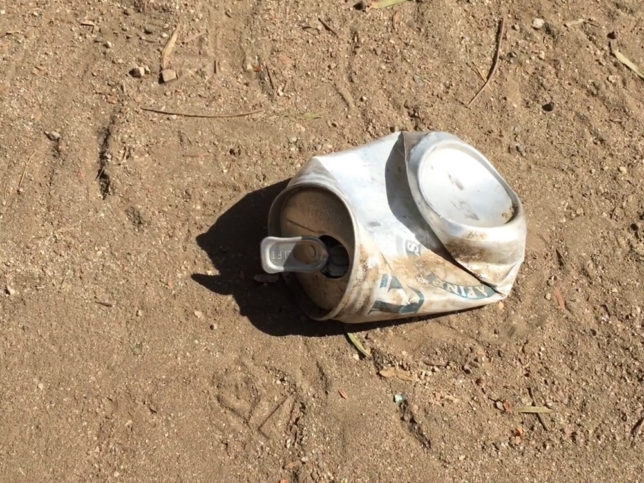
The next time I showed up to shul, Mark excitedly announced that he had something “special” for me in his car – something that I may be able to use for The Exodus Project. He ran out to his car and brought back the little box of junk from Death Valley. At first glance, I thought to myself, what the hell? What am I going to do with this stuff? But little did I know that inside that box was the inspiration for my first movie, Up to Now.
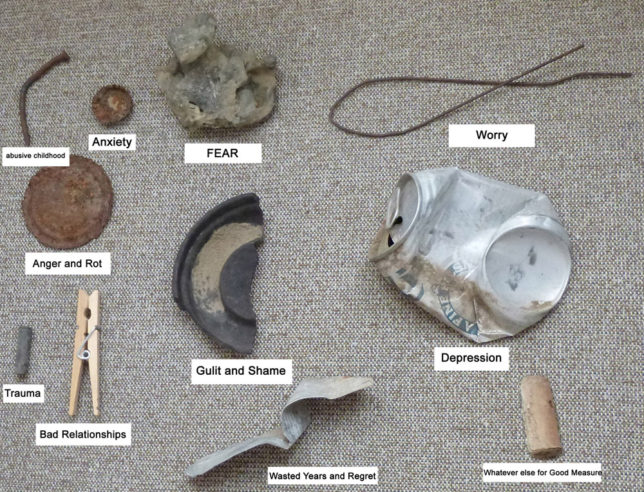
It took a few days, but once I was able to relate my own personal junk with the items in the box, I began writing the script for the movie – and it just flooded out of me like water pushing open a dam. I was able to fully visualize almost the entire movie all at once. It included characters I had invented like Moppet and Yuddy. I just didn’t know how I was going to execute it all exactly.
I knew I was going to make a movie – come Hell or high water, so I had my camera rolling a lot of the time during my Joshua Tree stay. I shot a lot of different footage while I was in the desert and even more when I was working in the studio back at home. I also knew I wanted to have parts of it animated and illustrated. I was going to need the help of my good friend Jonathan Nesmith to assist me with the technical bits, and definitely the animation. I have known Jonathan since I was 16, and he was doing animations on an Apple computer even way back then! That was around 1983, when people didn’t have a clue or even the concept of owning a personal computer. But I digress.
Jonathan’s partner, Susan Holloway also ended up helping me, as she too is an amazing artist. She works in several media, as does Jonathan, and film/animation is just one of them. Susan was instrumental in bringing together the aesthetics and “look” of the movie, pulling and creating resource material, as well as creating backdrops and several aspects of the animation. In fact, after working with both of them, the project turned into a true collaboration. If you took any one of us out of the equation, the movie would not be what it is. I spent several months with Jonathan revamping the script and had he not helped to steer the storyline into a narrative that made better sense, the movie would not be so visually successful. His sense of humor, genuine interest, commitment, extraordinary talent, and endless patience was an integral part of the whole effort.
The effort in itself was such a huge learning experience too. Making a movie about making a movie (essentially), or about how I was going to make art out of my experience was fun and interesting. It was cathartic and made the narrative almost fluid and open to a lot of change – while we were working on it. A lot of cognition was uncovered as we went along as if the emotional junk I was carrying around in real life was similar to ideas I had about the movie itself, and I learned to let go.
Watercolors
Speaking of junk. Because I had to illustrate the junk in the movie, I decided to draw and paint them in watercolor on nice Arches paper so that they could be framed and displayed in the show. They were not used much in the movie, but I painted at least 10 small individual pieces at seven by ten inches.
The Landscape
Time was ticking, so I had to get back into the studio and paint. And now I knew what I wanted. I was clear that I wanted to attempt the desert landscape, which was just plain weird. I never attempted “landscapes” before, but I was so in love with the environment of Joshua Tree and it inspired me, I felt like I didn’t have a choice. Suddenly there was an open path. Ideas were piling up. In fact, I was concentrating on two different approaches.
All this came upon me while looking at all the photos I took. That’s when it all really hit me. I got to work right away – two series at once: straight-up oil paintings and mixed media collages on birch panels that I eventually renamed Rock and Refuge.
But getting through the first canvas proved to be extremely difficult. I didn’t know I was going to have a breakthrough at the end of it all, though. I absolutely hated it at first. It went through many transformations because of the way I decided to approach the painting process. I did not begin with a pencil sketch. I did sketch a little bit in yellow paint however, and this was probably why I had some trouble, but I didn’t want to copy the photograph I had. I wanted to go only on my imagination. So I only used the photo as a guide. I wound up flattening it all and used little perspective. I just went for total texture. It was a huge challenge for me not to look at the photo. I put it away after I got that rough skeleton sketch on the canvas, so I kind of went out of my mind trying to remember parts of it.
There are a few different versions of the painting underneath the final one.
It took me so long to get this painting to a point where it no longer drove me insane. Believe it or not, it went on for about six weeks. I mean, I was also working on the mixed media pieces in the meantime, which was going very smoothly I might add, but this was just killing me.
Yet, I loved the challenge. Once I finished this one. I started right away on Space Rabbit Ranch.
Rock and Refuge
Rock and Refuge is what I eventually titled the series of the mixed media pieces that are made on the birch panels. They consist of oil paint, manila pattern paper and fabric. I used my photographs as reference here, too, in order to create my basic template. These pieces are also landscapes in the way that they’re based on the various architecture (houses) of Joshua Tree that seem to connect naturally with the rock formations.
Then, I’d follow the outlines of the main contours of the photograph to make up the basic composition.
I’d draw this composition on thick manila pattern paper that was the same size as the entire panel and add extra shapes where I wanted. Then I cut out the shapes to make patterns. I’d use some of them as patterns to cut out the pieces in fabric. (Fabric colors and patterns are picked out extremely carefully). Then I’d stick all these pieces onto the panel in the same exact arrangement I originally drew on the panel in pencil, like a puzzle.
I’d then carefully paint the paper pieces (as to not touch any of the fabric pieces) with oil paint. Sometimes I painted on the wood itself, but I pretty much stuck to painting right on the paper pieces because I liked the way the paper took to the paint. I’d make a few changes along the way, but eventually, they would turn out the way I wanted them to.
Kabbalah – Tree of Life
Last but not least, I made a few of these Kabbalah watercolors. On most of them, I tinted the #300 paper before painting the tree grid on top. I learned a lot about the significance of the Tree of Life while creating them because I needed to know what to write inside of the circles, so I had to research a bunch. All of the pieces are a little different from each other because of this. I sort of opened a can of worms and learned way more than I set out to, because each of the little worlds inside of the circles represent so many things, as well as biblical persons – and it gets pretty philosophical. In order to understand these concepts, believe it or not, I found many answers in the simple Chassidic folk tales of Reb Nachman of Breslov, specifically in a story called The Seven Beggars.
